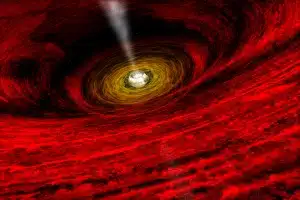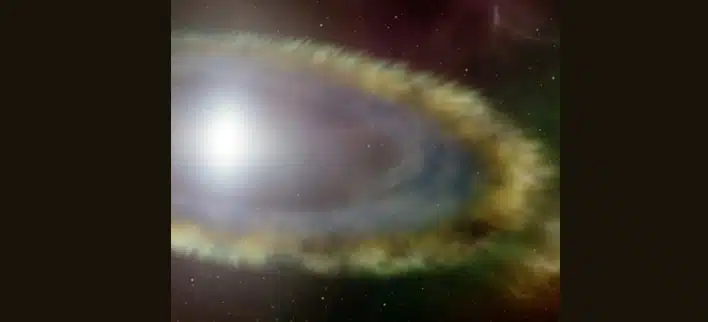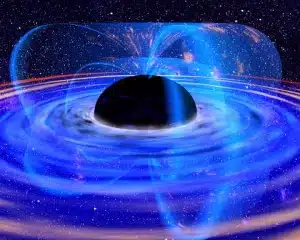Using galaxies as cosmic telescopes to reveal the diets of the black holes at the heart of every galaxy.
Anglo-Australian Observatory Astronomer David Floyd has been able to observe matter falling into a super-massive black hole – one of the Universe’s brightest objects.
It’s the first time scientists have been able to probe so close to a supermassive black hole, a region inaccessible to telescopes until now. His work will be presented in public this week at Fresh Science – a national science talent search – at the Melbourne Museum. David is one of 16 winners from across Australia.
Material in the immediate vicinity of a black hole undergoes extreme compression and superheating. The result is a quasar, which emits so much energy as visible light, that it can outshine the galaxy in which it is located by many thousands of times.
“The problem is that the regions emitting these huge amounts of light are so small and their distance from Earth so mind-bogglingly far, that it has been impossible to observe them directly, and therefore to understand the part they play in the evolution of the Universe,” David says.
“Conditions in a quasar are so extreme that they push the laws of physics to breaking point and beyond. They are the particle accelerators of the Universe. They shape galaxies and drive the evolution of the Universe.”
The research makes use of a technique known as gravitational microlensing, where the light from a quasar passes near or through another galaxy on its way to Earth. The intervening galaxy acts like a lens, enlarging and splitting the image of the quasar into several components, each of which can be analysed.

Artist’s impression of material falling onto a black hole. The material is compressed, heating it and causing it to shine. (image: April Hopart, NASA/Chandra X-ray Center (CXC))
Using data from the 6.5-metre Magellan telescope in northern Chile and the NASA Hubble Space Telescope, David and his colleagues, Nick Bate and Rachel Webster, have shown that about 99 per cent of the visible light in the quasar with which they have been working is produced in a region just a thousand times larger than the black hole itself.
This is so tiny in astronomical terms, he says, that it would take a telescope with a lens 100 kilometres across to observe directly.
“It is exciting that we can study these extreme objects at all,” David says. “This technique heralds a new era in exploring black holes. It can probe regions just a few times larger than the black hole at the centre of the quasar in a matter of minutes, rather than decades. And these early results are just a taste of what’s to come.”
David Floyd is one of 16 early-career scientists presenting their research to the public for the first time thanks to Fresh Science, a national program sponsored by the Australian Government. His challenges include presenting his discoveries in verse at a Melbourne pub.
For further information, contact David Floyd at dfloyd@unimelb.edu.au










 Fresh Science is on hold for 2022. We will be back in 2023.
Fresh Science is on hold for 2022. We will be back in 2023.